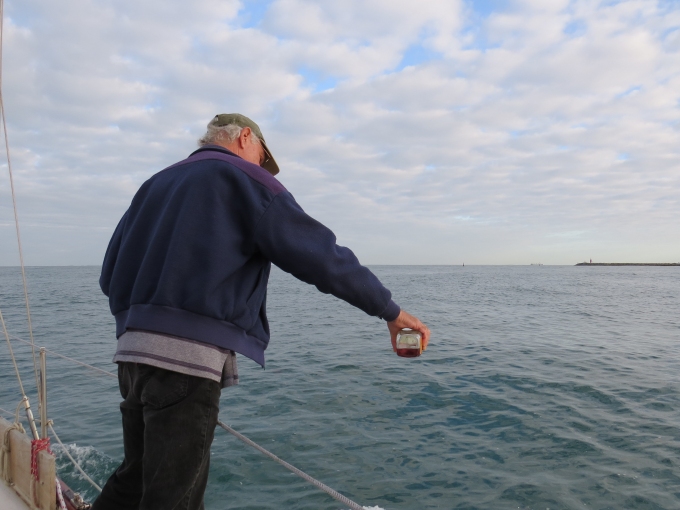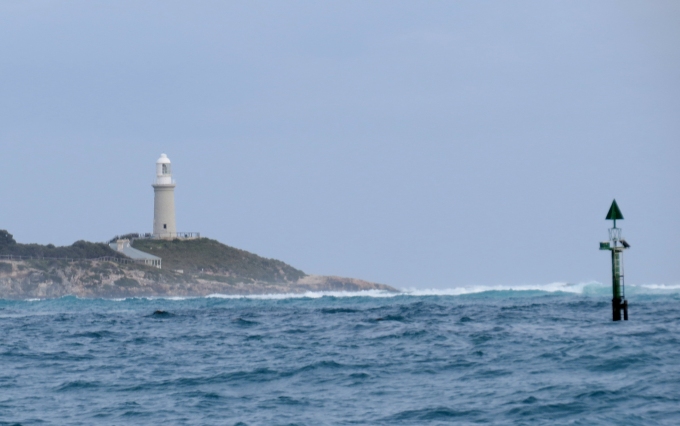A Quest for Quokkas on Rottnest Island
/Folks in Mandurah told us to be sure to visit Rottnest Island to see the quokkas. Quokkas? What the heck is a quokka? How can one country have so many animals (mostly marsupials) that we've never, ever heard of? How could we possibly miss out on seeing an animal that is rarely found elsewhere in the world? And so, a day at Rottnest seemed almost mandatory if only to seek out the island's most famous inhabitants.
We worried that we wouldn't see one, but we didn't have to wait long for one to make an appearance. There are an estimated 10,000 of these cat-sized macropods (big footed) on the island and they're not particularly shy nor afraid of humans. Though there are a few places where they occur on mainland Australia, predators and loss of habitat have all but wiped them out. Here on Rottnest, they're free to live and thrive … and they do. They're primarily nocturnal by nature, but you'd never know it. They did tend to stay in shadier areas, but they were out in great numbers when we visited.
Peter was our knowledgeable volunteer guide, a human rights lawyer educating us about quokkas. The word quokka is derived from the Aboriginal Nyungar word, gwaga. Though they look like little kangaroos as they hop around, they can climb trees. They're herbivorous little critters and we saw them munching on grasses and Norfolk pine needles when they weren't begging for food from willing, but ill-advised, tourists. Though there are many quokkas resident on Rottnest, they're classified as a “vulnerable” species because of their restricted range and the fact that they only rear one offspring per year. It was that time of year fortunately, and we saw many joeys, or at least parts of joeys, in their mamas' pouches. Peter knew just the locations to check to find the quokka nursery.
Rottnest certainly offers more in the way of animals than just quokkas. We saw lots of birds. Seagulls, raven and terns were nearly a nuisance at the waterfront restaurants, vying with the restaurant's patrons for their lunches. As we walked around the island and past the lakes, we spotted several other bird species. Had we been able to visit longer, I think our bird list would have grown significantly.
Clockwise from top left: Brush Bronzewing, Silvereye, Plover, Pied Oystercatcher, Australian Shelduck, Galahs, a not-so-native peacock and Shelduck ducklings.
One of the critters we hoped to avoid was the duggite, a poisonous snake native to the island. We saw one at the museum and that was sufficient.
We did, however, manage to see some of the other reptiles on the island. A King's skink, known as a wandy to the Aborigines, crossed my path most unexpectedly. I wasn't anticipating that they'd be quite so big, but this one was about 18” (46cm) long. I'm not partial to skinks, even little ones. We also saw a related skink called a bobtail or a Western shingleback. We can understand the bobtail designation. He reportedly has a bright blue tongue which he displays when threatened. We did not see his tongue unfortunately.
We sat at the waterfront pub for awhile and nursed our pints while watching the seagulls do their thing. The sun was shining brightly. It was warm and lovely. A peacock strolled by and quokkas tickled our feet as they scrounged for leftovers under the tables.
We dragged the dinghy off the beach and motored back to Nine of Cups. She was rocking and rolling in the surge, but it was manageable. We hauled the dinghy and lashed it to the deck. We wanted an early start in the morning. We poured a glass of wine and toasted a beautiful, blazing Western Australia sunset. Some days are good … others are pretty great!




















